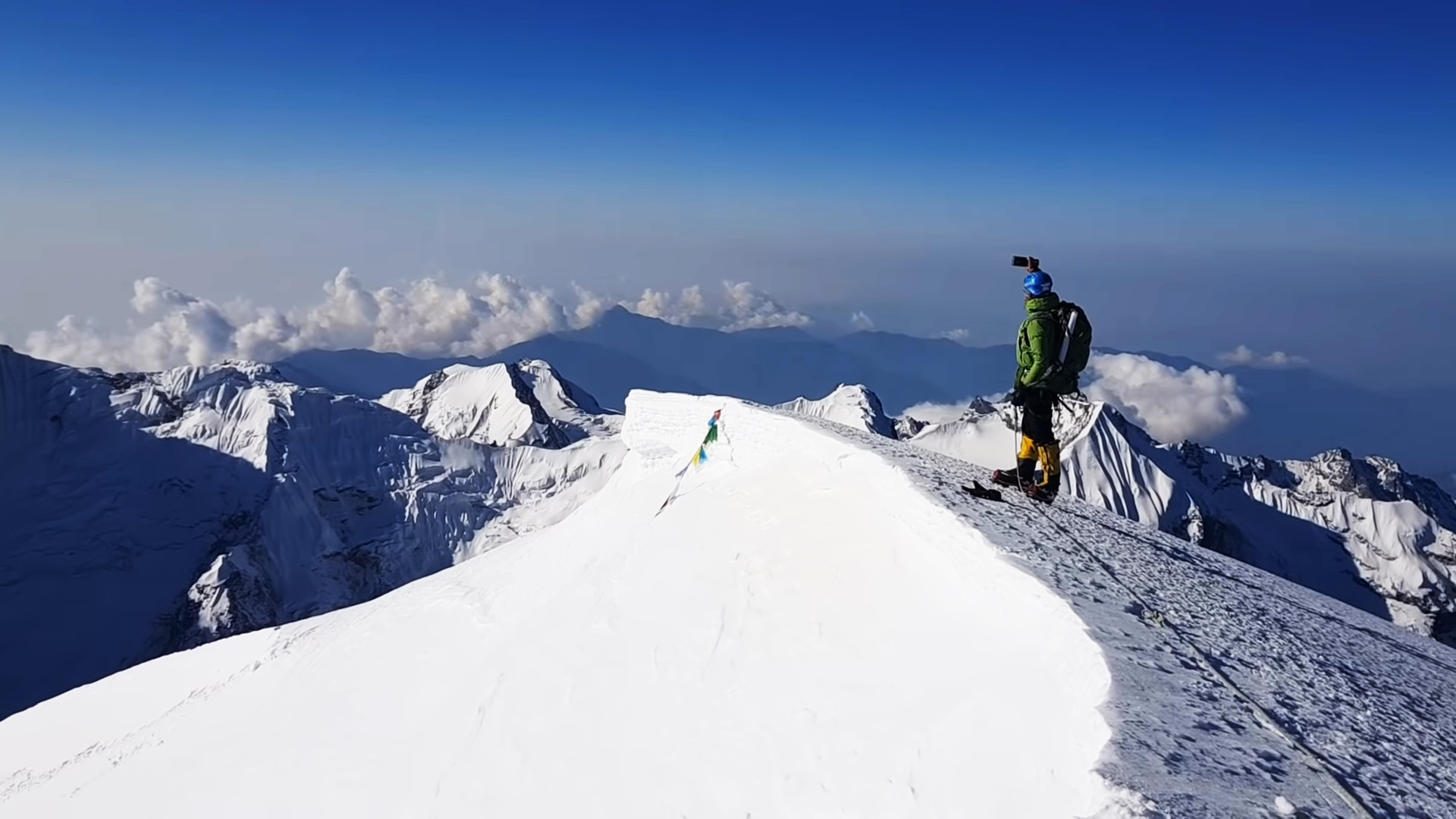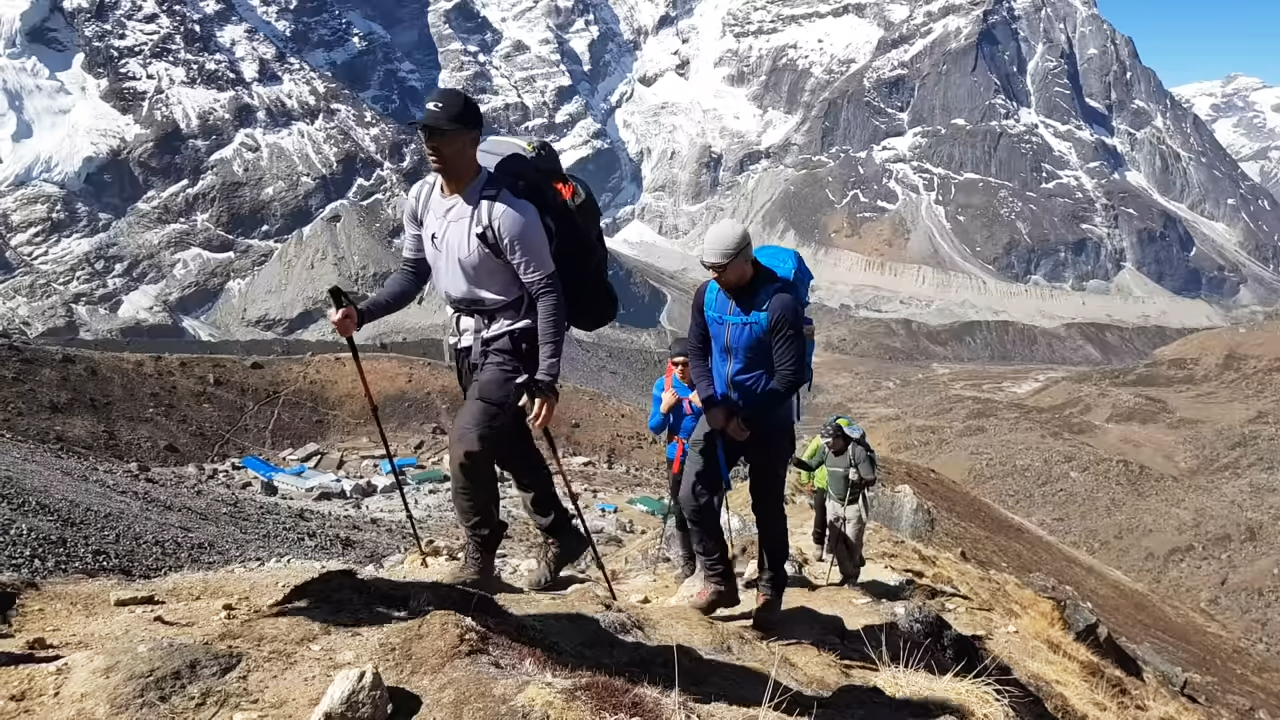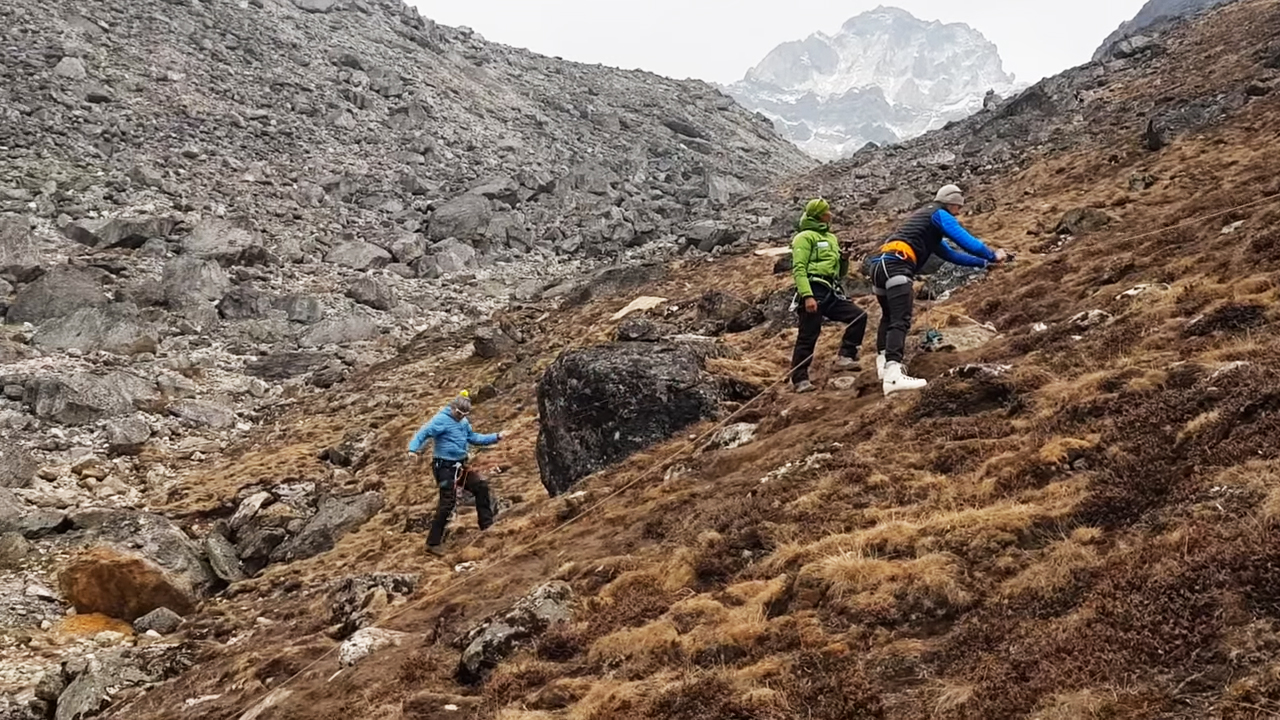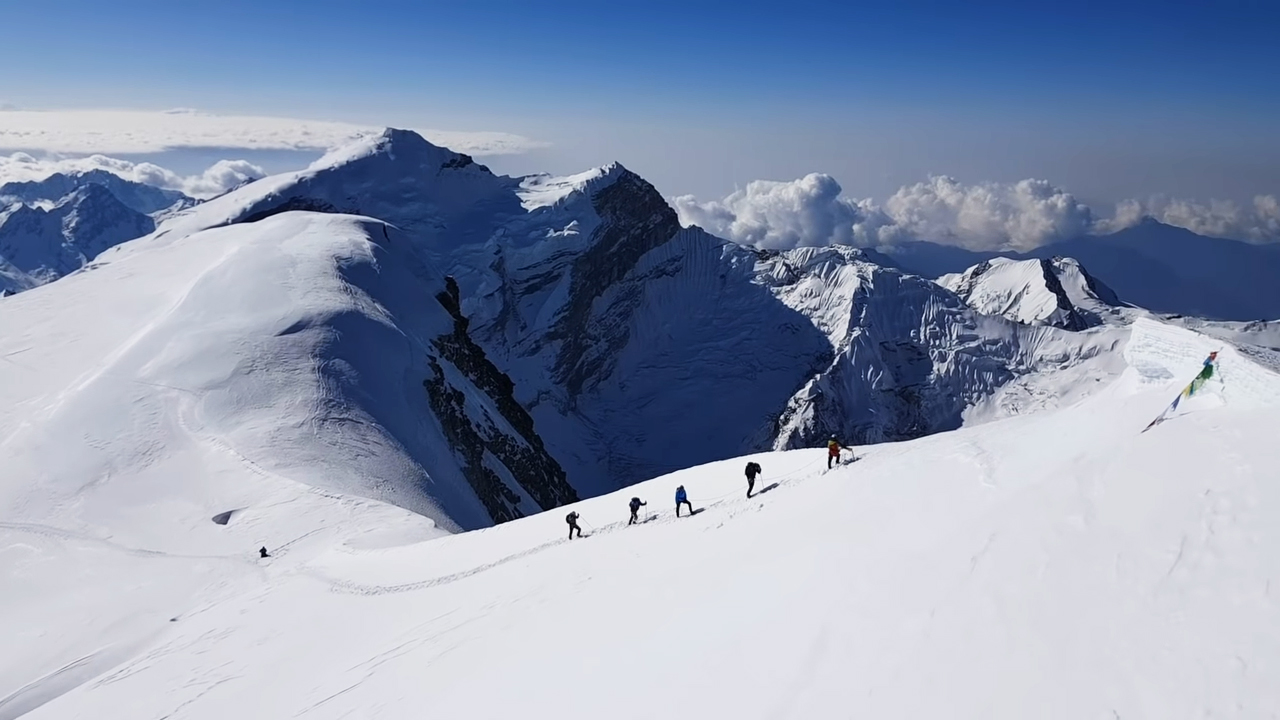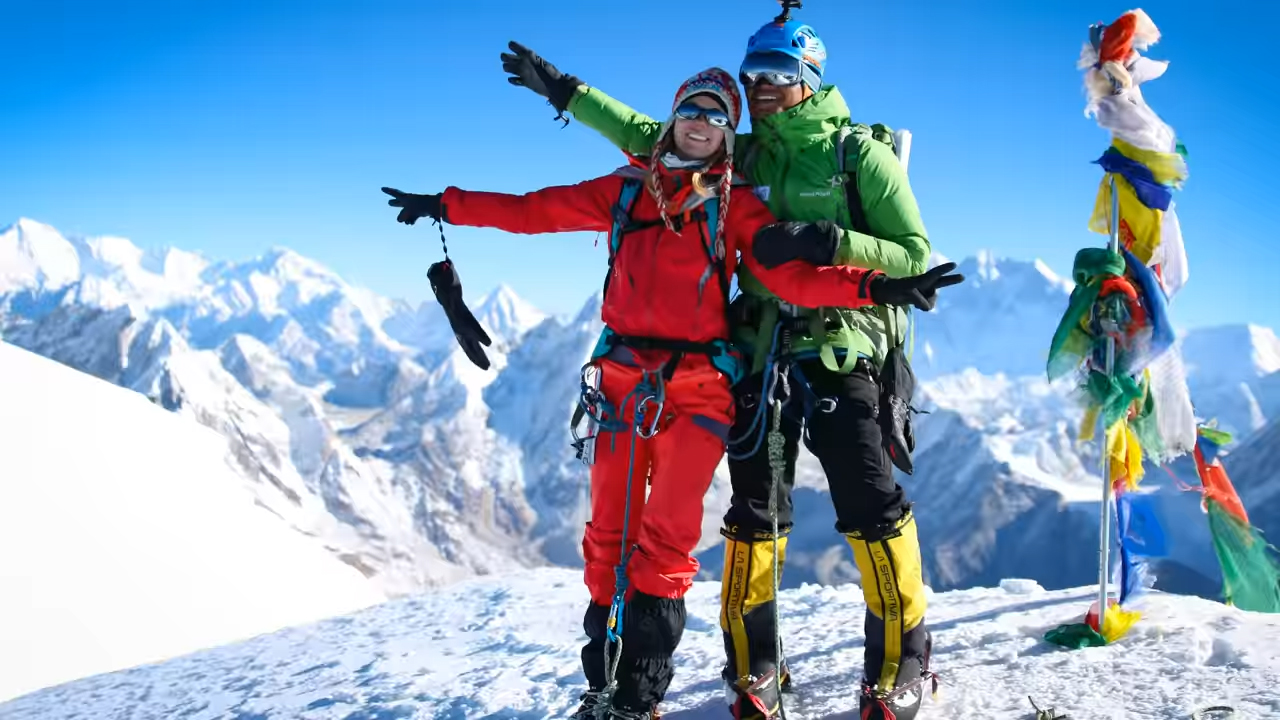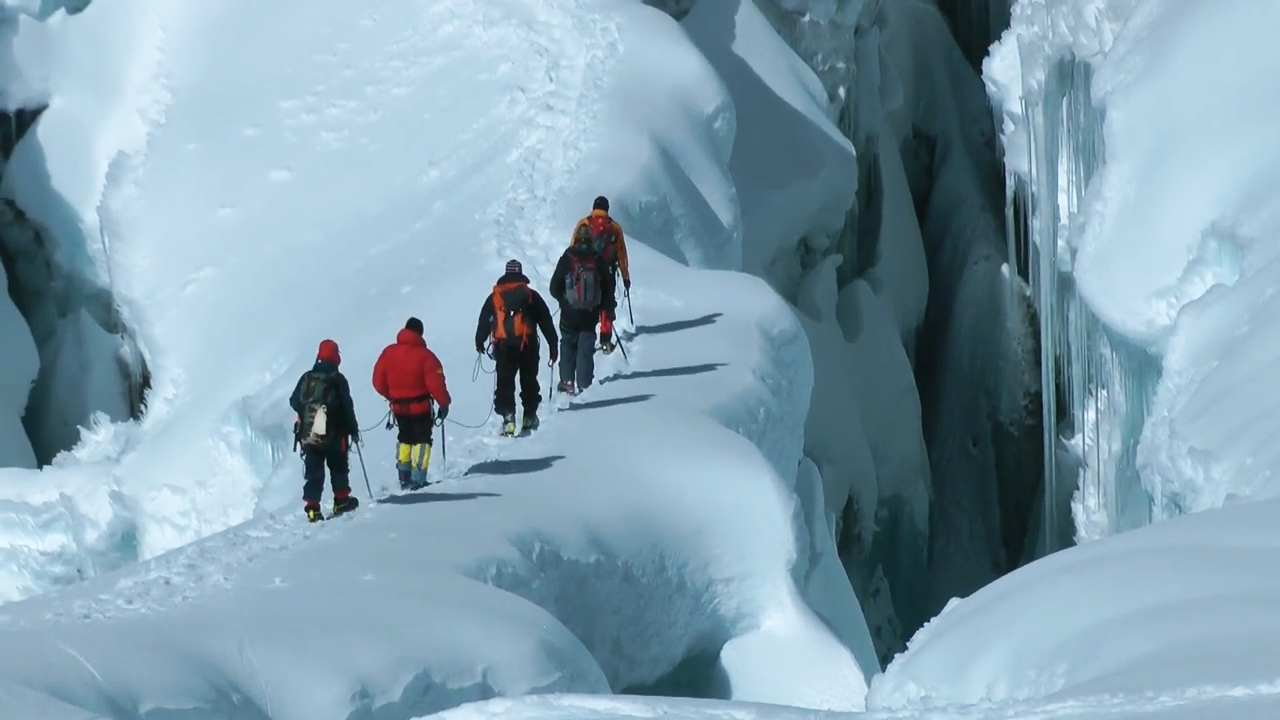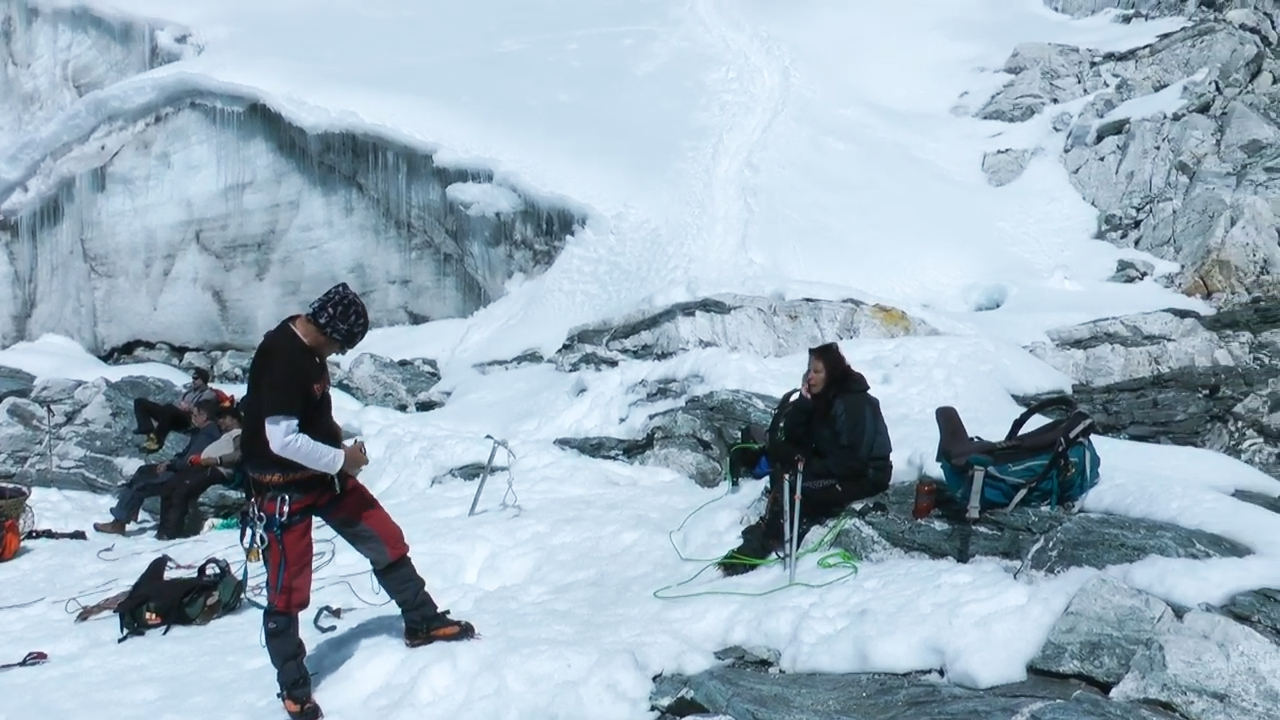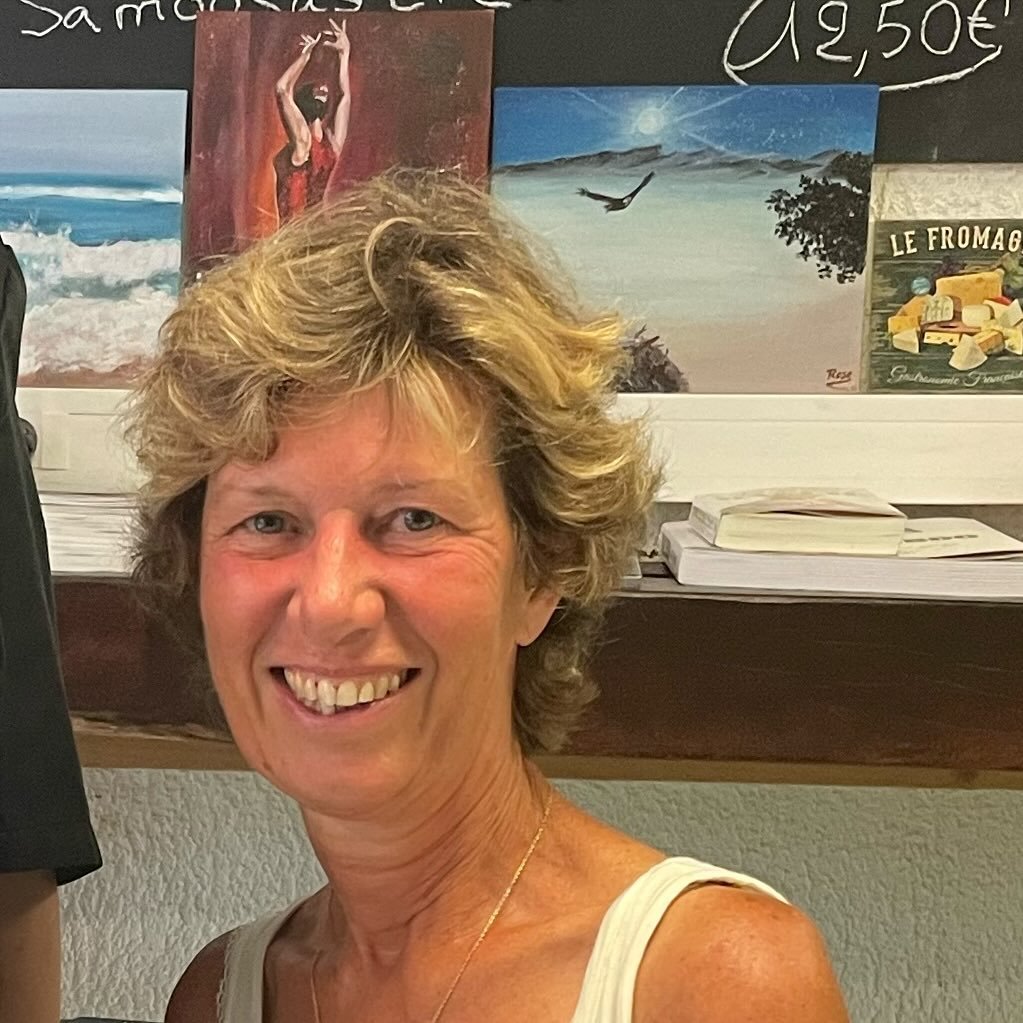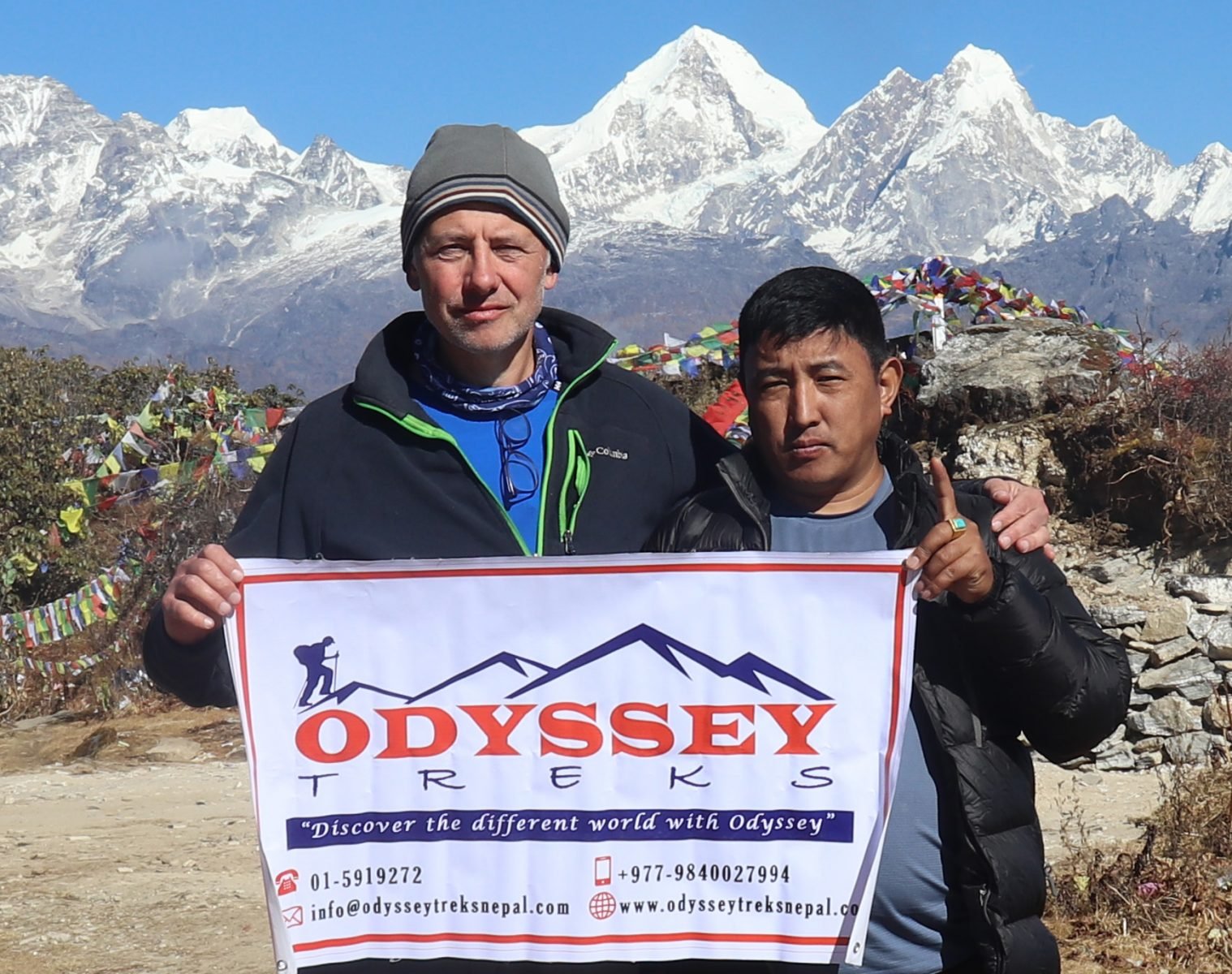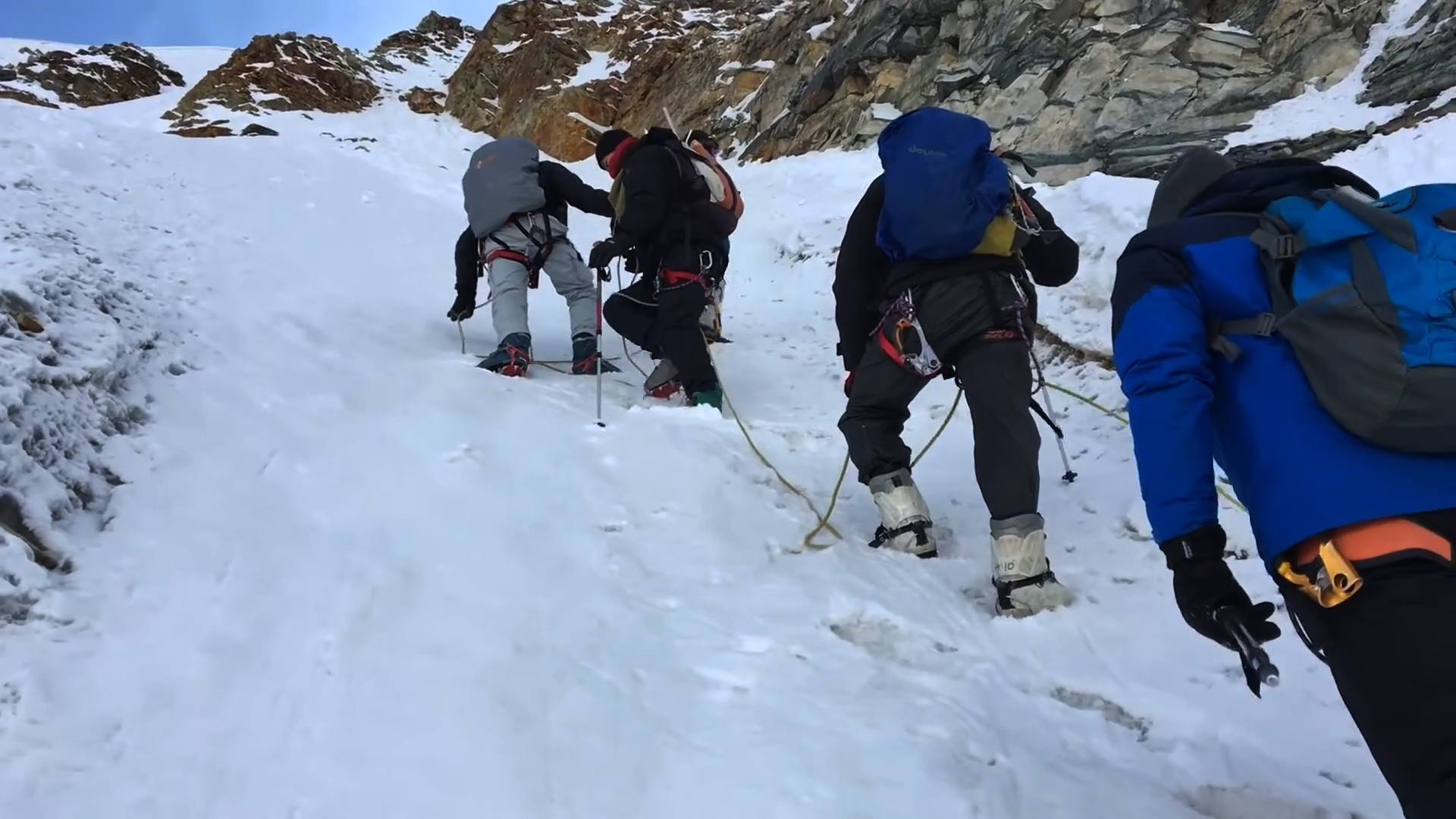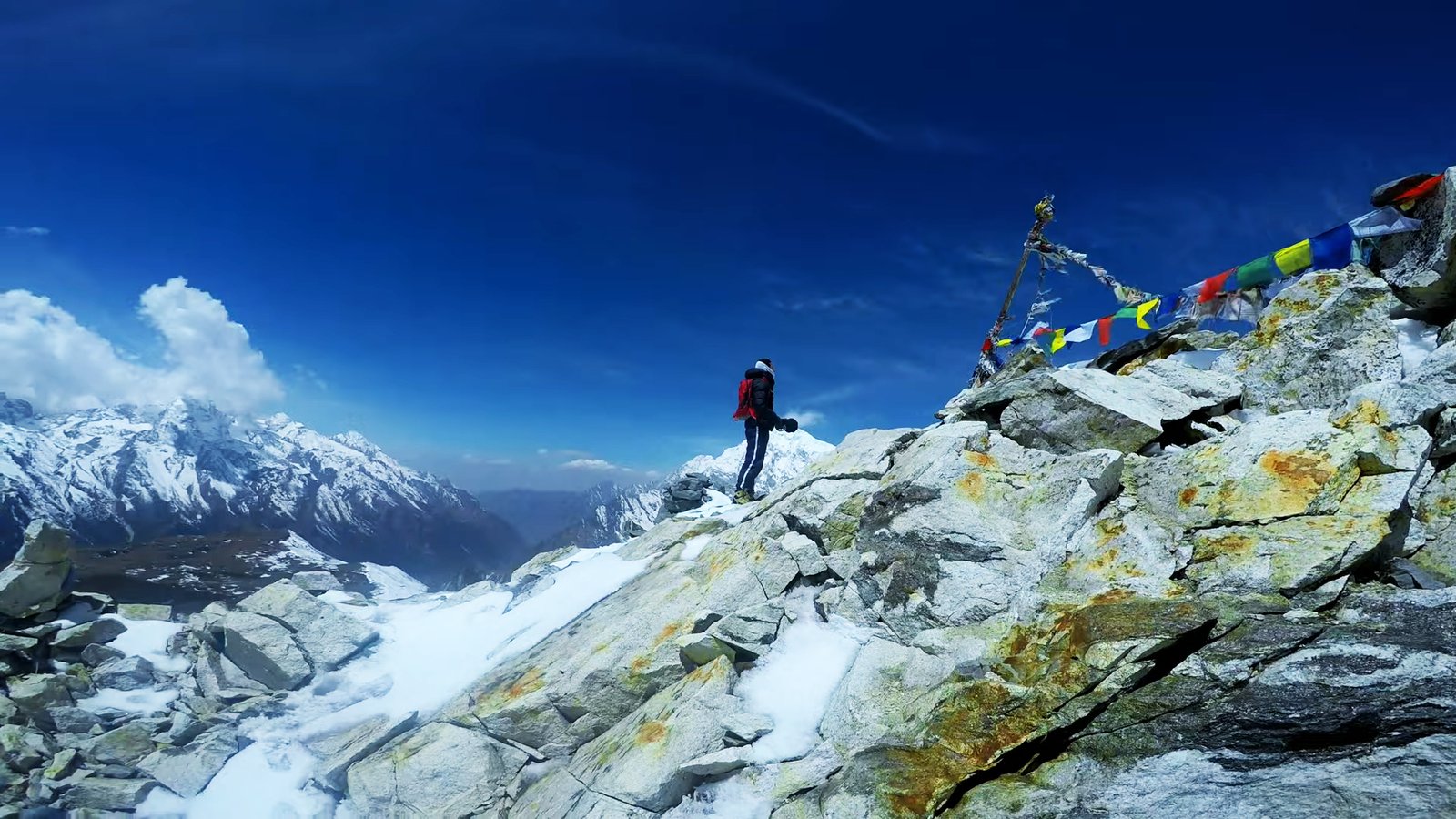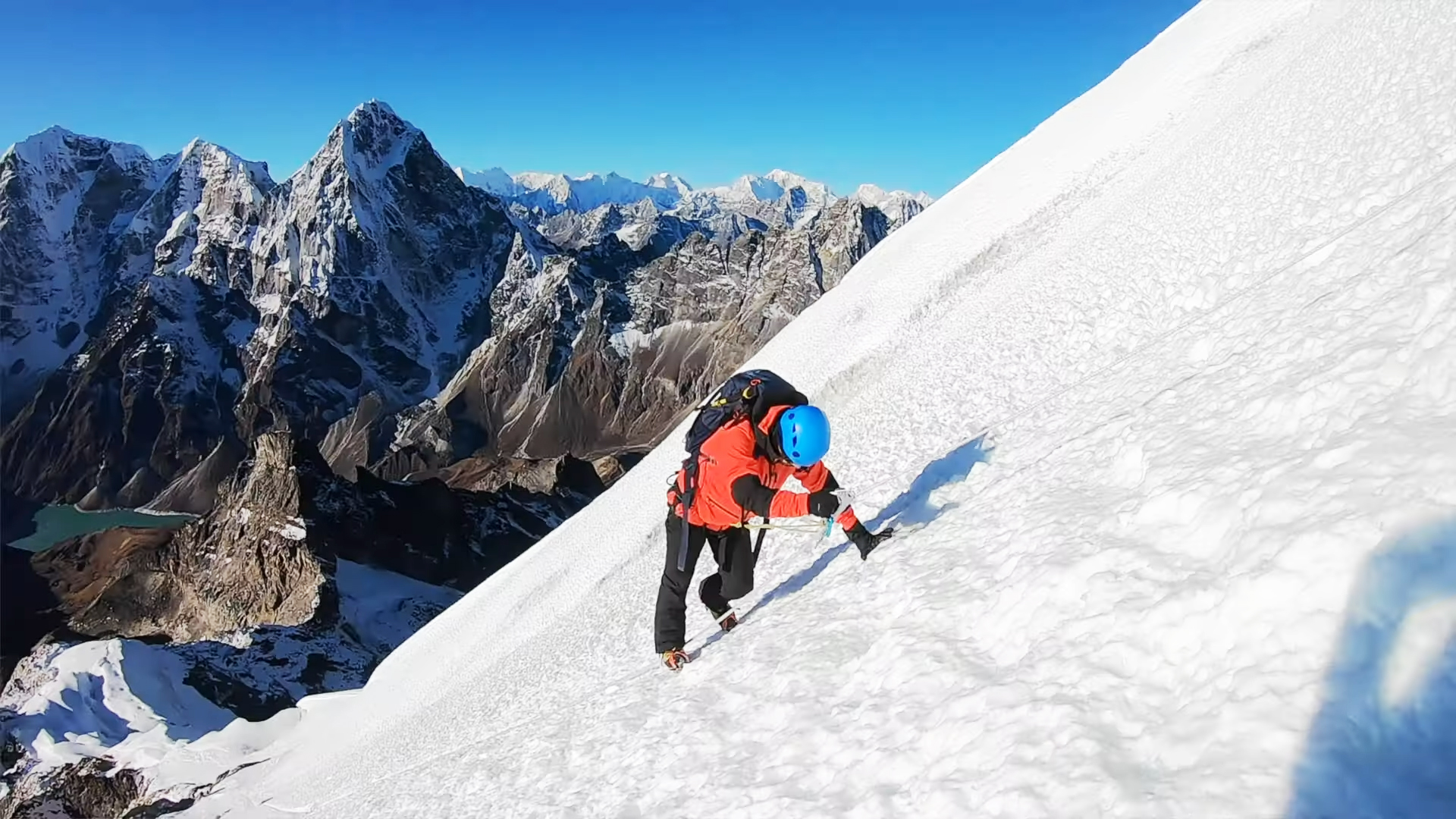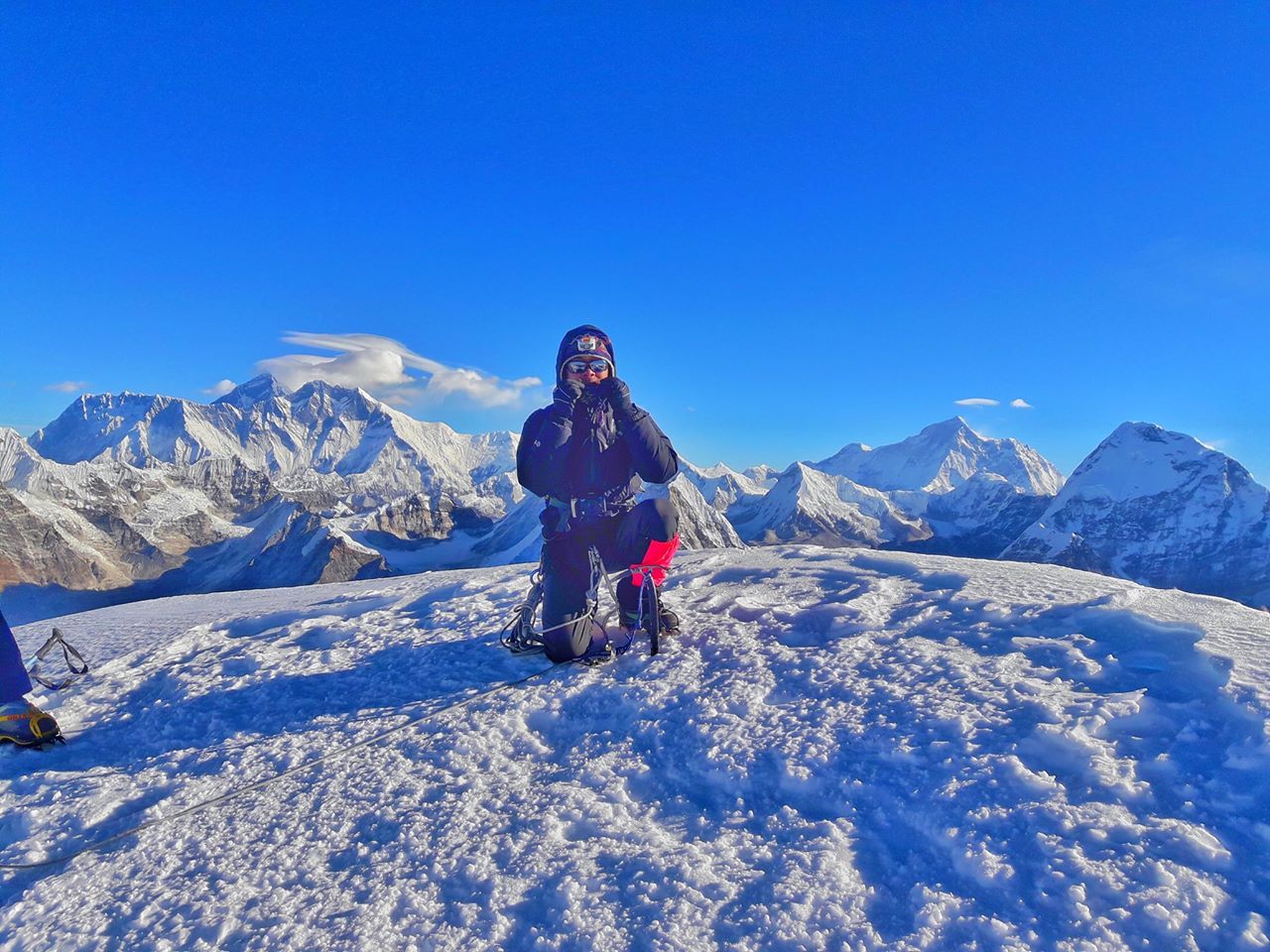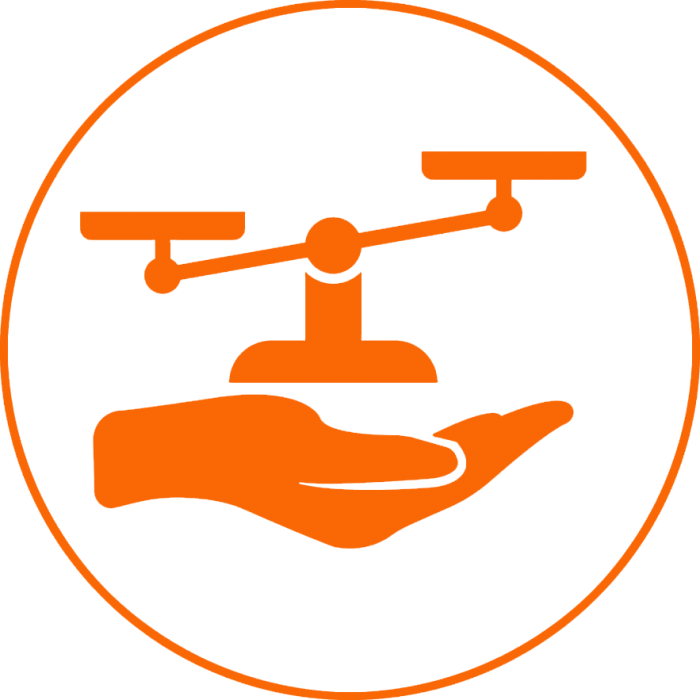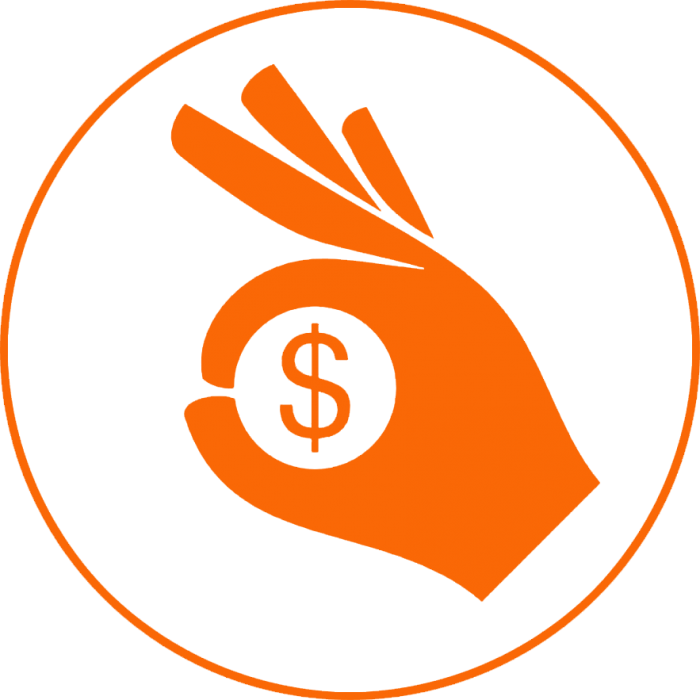Trip Overview
Introduction to Mera and Island Peak Climbing
Mera and Island Peak Climbing Package is a combination of these two peaks. Mera Peak (6,654 m) and Island Peak (6,189 m) are famous trekking peaks located in the Everest region of Nepal. It is a great achievement to cross a challenging high pass and reach the top of two magnificent peaks above 6,000 meters on the same trip.
Mera and Island Peak Climbing is a good combination of trekking and climbing in the Everest region which is a perfect experience for the adventure lover. The journey is categorized as difficult as it consists of two majestic peaks above 6,000 meters, a technically challenging pass, and seven consecutive nights at an altitude of over 5,000 meters.
From the top of the peak, you get a magnificent view of the mountains above 8000 meters such as Mount Everest (8,848 m), Mount Kanchenjunga (8,586 m), Mount Lhotse (8,516 m), Mount Makalu (8,485 m), and Mount Cho Oyu (8,201 m).
Aside from the climbing period, the trekking portion takes you to remote mountain valleys. Trip offers the opportunity to explore the unique authentic Sherpa culture, traditions, religion, and lifestyle.
During Mera and Island Peak Climbing trip, you will also cross many suspension bridges, dense rhododendron forests, and beautiful ancient settlements with magnificent Himalayan views. Most of the people living in these areas are Buddhists where you can also see monasteries.
You may visit: Nepal Cultural Tour in just 12 Days, Itinerary, Cost, Distance, Culture
A Difficult Climbing Trip
Climbing two peaks on the same trip is relatively difficult compared to other trekking peaks. But with an experienced climbing guide and some of your effort, you can conquer the peaks. No special technical training is required but physical fitness, trekking experience, and climbing skills are required. The guide gives you basic pre-climbing training and short instructions before climbing.
Basic teahouses are available on the trekking route but tented camps must be arranged during the climbing period. We provide all the equipment you need for trekking and climbing or you can rent it. All team members must have insurance for any peak climb. And also must have a license registered under the Nepal Mountaineering Association (NMA) with the climbing guide.
The best season for Mera and Island Peak Climbing is spring (March to May) and autumn (September to November). Although winter is also a good season if you prepare well to face the cold weather. The mountain views are crystal clear in winter and there are fewer trekkers than in spring and autumn.
Check out our itinerary which covers all aspects of trekking and climbing. Let us know if our itinerary is not suitable for you, we will tailor it to your needs. Join us and make your trip the most unforgettable moment of your life by climbing two famous peaks in one trip to the Himalayan country of Nepal.
You May also like to visit: Island Peak Climbing in Nepal, 13 Days, Itinerary, Cost, Distance
Trip Itinerary
Fly Kathmandu to Lukla (45 minutes) and trek to Chutok (2,800 m) - 3 to 4 hours walk.
Chutok to Zatrabok (4,600 m) via Zatrawala Pass (4,704 m) - 6 to 7 hours walk.
Zatrabok to Kothe (3,600 m) - 5 to 6 hours walk.
Kothe to Tangnang (4,356 m) - 5 to 6 hours walk.
Free day.
Trek to Khare (5,045 m) - 4 to 5 hours walk.
Acclimatization at Khare.
Khare to Mera La (5,415 m) and Base Camp (5,300 m) - 5 to 6 hours walk.
Base Camp to High Camp (5,800 m) - 5 to 6 hours walk.
Summit Mera Peak (6,461 m) and trek to Kongma Dingma (4,850 m) - 7 to 8 hours walk.
Kongma Dingma to Seto Pokhari (5,000 m) - 5 to 6 hours walk.
Seto Pokhara to Amphu Laptsa High Camp (5,400 m) - 5 to 6 hours walk.
Cross Amphu Laptsa (5,845 m) and trek to Imja Valley - 9 to 10 hours walk.
Imja Valley to Island Peak High Camp (5,600 m) - 5 to 6 hours walk.
Summit Island Peak (6,189 m) and trek to Chhukung Village - 9 to 10 hours walk.
Extra summit day
Chhukung Village to Namche (3,440 m) - 7 to 8 hours walk.
Namche to Lukla (2,800 m) - 7 to 8 hours walk.
Fly Lukla to Kathmandu – 45 minutes.
Why not list the price?
Each client's needs may be different. The price of the trip varies according to the size of your group and the service you want. The cost of the trip is calculated according to the type of service and accommodation chosen by our customers.
Each trip is customized to fit the client's needs and group size, so the price of each organized trip is different. Please let us know the service you want and the size of the group. We create trips to suit your taste and travel budget per your requirements. Hope you find our price calculation reasonable according to your needs and preferences.
Frequently asked questions about this trip
How difficult is the trek?
The difficulty depends on where and how long you want to trek. The short trek is easy while the long trek requires some physical fitness.
What is altitude sickness?
Altitude sickness is normally known as acute mountain sickness. This can happen when people rapidly climb up to an altitude of more than 3000 meters. We ensure minimal risk by adding rest to our trekking itineraries. Most people will feel some effects of altitude, some shortness of breath and possibly light headache, this is normal enough. Acute mountain sickness patients are quite different and usually have a serious headache, sickness, and lose awareness. In almost all possible cases there are sufficient warning signs to take action properly. Descending to a lower altitude is usually enough to prevent any further problems.
What type of accommodation is available during the trekking?
There are mainly tea houses and lodges available for trekking and they are usually made using local materials and are very comfortable. These accommodations are often family-run and usually provide single and double rooms. The dining room is on the ground floor and is often on fire. All food will be cooked in order in the family kitchen. Toilet facilities are sometimes separate and sometimes outside. Most lodges provide mattresses and blankets. It's a good idea to always have a sleeping bag, which can be useful, and perhaps an inflatable pillow.
How long do we walk every day on trekking?
Trekking programs are classified into three different categories: soft, moderate and hard. Soft treks are only about 7 days to 10 days in duration. They generally do not go above 4000 meters; you can expect to walk about 4-5 hours each day. Moderate treks are challenging enough and long treks that go to the high hill country. Physically exhausting, this involves trekking along the cliffs of the mountains for about 6-8 hours. Harder treks are longer treks that go farther away from the general abode of trekkers and tourists. These physically challenging treks involve walking for 7- 9 hours each day.
How much weight do I need to carry on the trek?
You carry some of your personal belongings, such as warm clothing, water, snacks, sun block, cameras and more. Generally, these items will be lightweight, from 5 to 10kg (10 to 20 pounds). Our porters are available for other heavy goods and for your information one porter would be sharing by two people. The maximum weight carried by one porter is total 20 kg. this means 10 kg. per person is allowed for the trek. In case if you wish to carry more than this weight then you need to hire additional porters.
What is the best time for trekking in Nepal?
October and November are considered as the best times for trekking in Nepal due to dry season. December and January are also considered good times for trekking but it is extremely cold at high altitudes.
Google Reviews
Guest reviews
Thank you a lot for your organization about my trek. It was a superb experience; all was perfect. Karma is a very nice person and a good guide. I appreciated trekking with Odyssey (a reliable Nepal trek operator). If I come back to Nepal, I will be happy to...
Have just returned from my fourth trip to Nepal and as always Odyssey Treks organized everything superbly. We visited Makalu relatively late in the season and were rewarded with empty trails and amazing weather. Karma was as entertaining, friendly, and informative as ever along with Ang Dawa Sherpa who...

